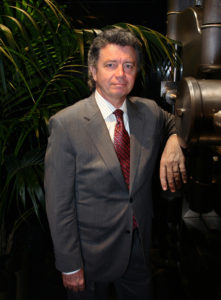Many land bank leaders and community revitalization practitioners feel that, while the first generation of land banks have filled a vitally-important role, there is much untapped potential that a more-strategic second generation of land bank could unleash.
By “more strategic”, I mean more focused on the ultimate desired outcome–community revitalization–rather than the tactical, “transactional” focus on just moving properties out of inventory. The latter seems to be the ultimate goal of too many land banks these days.
Over the past month or so, as a result of work I’m doing for a couple of land banking clients, I’ve been contemplating the combination (or partnership) of land banks and community land trusts (CLTs). This could be a key component of defining the Land Bank 2.0 model.
Land banks have been around for only a bit over a dozen years, and CLTs for about 50. There are about 150 land banks and about 225 CLTs in the U.S. Both have seen significant growth in the past few years, due to the expansion of community revitalization efforts, and to the resulting crisis in affordable housing.
As the Rooflines articles linked to below point out, they are natural complements to each other: land trusts have a property disposition problem, while CLTs have a property acquisition problem. Land banks are strong on tactics (cleaning encumbrances from vacant properties), while CLTs are strong on strategy (usually focused on affordable housing/gentrification solutions).
So, is it sufficient to simply encourage more collaboration between the two types of organizations, as these authors did five years ago? Or would it be better for states to rewrite their land banking legislation to enable the creation of a hybrid organization: land bank + CLT? This would combine proven tactics with proven strategies, and would help address the full lifecycle of vacant property reuse.
Land banks and community land trusts (CLTs) are often perceived as “off mission” or antithetical tools that are not suited for the same environments. Conversely, they also tend be conflated as one and the same. Neither perception, however, reflects reality.
Land banks are public entities, usually public nonprofit or governmental entities, which specialize in the conversion of vacant, abandoned and foreclosed properties into productive use.
On the other hand, CLTs are traditionally private nonprofits that hold land in trust to provide affordable housing and other community assets in perpetuity.
In the 2016 blog post linked to below, Center for Community Progress and Grounded Solutions Network come together to help set the record straight and explore how land banks and community land trusts can coordinate to optimize equitable development outcomes.
Theoretically, a land bank-CLT “property pipeline” can achieve both lasting stabilization and affordability, despite fluctuations in the market. John E. Davis argues that CLTs and land banks are each the potential solution to the other’s problem. Together, they could complete the “pipeline”.
Most land banks consider their work to be done once properties have cycled through the land bank laundromat. What happens after their return to private ownership is typically outside the land bank’s purview. Affordability is left to the whim of the marketplace; upkeep is left to the whim of the new owners; occupancy is dependent upon the owners’ ability to meet monthly mortgage payments.
Community land trusts, on the other hand, do a good job of sheltering lands, homes, gardens, stores, and facilities brought beneath their protective umbrella, but they do a poor job of building that portfolio in the first place. Without access to monies and powers made available to land banks, most CLTs have remained small. Few have managed to acquire enough lands and buildings to transform the neighborhoods they serve. They have not gone to scale.
While there are currently few land bank and CLT collaborations across the U.S., the good news is that we see a lot potential for effective partnerships.
We have established a Land Bank 2.0 group on LinkedIn, for those who would like to further explore the potential for land bank/CLT partnerships. This group is where we figure out what aspects of land banks work, what aspects don’t work, and what aspects are missing. You’re welcome to join the conversation. Or email me your thoughts, if you prefer: storm@revitalization.org
Here are three other subjects under discussion on the Land Bank 2.0 LinkedIn Group:
- Ideal legal structure: I’ve read more than a few arguments over the years that 501(c)(3) land banks (non-profit corporations) are the most effective structure.
But successful for-profit land banks exist, as well as successful land banks that function as local government agencies. So, is there an ideal legal structure, or does the appropriate model vary with local circumstances? - Tax Increment Financing (TIF): This discussion is specifically focused on the use of tax increment financing by land banks as a way for them to become more of a neighborhood/district revitalization entity.
- The next generation of land banks should be more efficient at dealing with brownfields. This would likely require their becoming more involved in TIF.
About the Author:
 Storm Cunningham is the publisher of REVITALIZATION, an author, and a consultant on resilient economic growth.
Storm Cunningham is the publisher of REVITALIZATION, an author, and a consultant on resilient economic growth.
His 100+ global client list includes: US State Department, Boeing, Harvard University, Ontario Chamber of Commerce, Israel Planners Association, European Property Italian Conference, University of Guadalajara, National Arbor Day Foundation, U.S. Environmental Protection Agency, American Institute of Architects, Project Management Institute, US Embassy (Poland), Governor of Montana, Canadian Urban Institute, Santee Cooper, Urban Land Institute, University of Texas, Leadership Cleveland, and many more.
A former Green Beret SCUBA Medic, Storm lives in Arlington, Virginia, and is the author of two highly-acclaimed books: The Restoration Economy (Berrett-Koehler, 2002), and Rewealth (McGraw-Hill Professional, 2008). His upcoming 3rd book is RECONOMICS (coming January 2020).
See Nov. 9, 2016 article in Rooflines by Emily Thaden, Kim Graziani & Annie Stup

